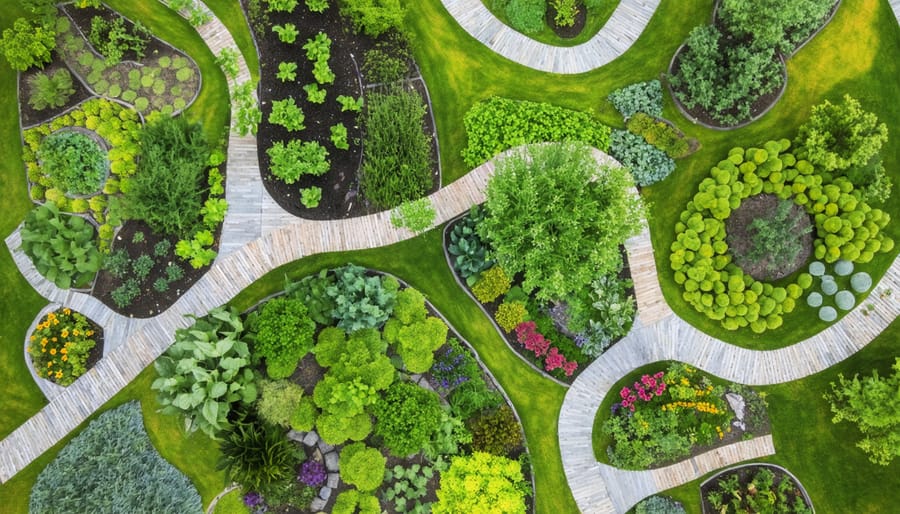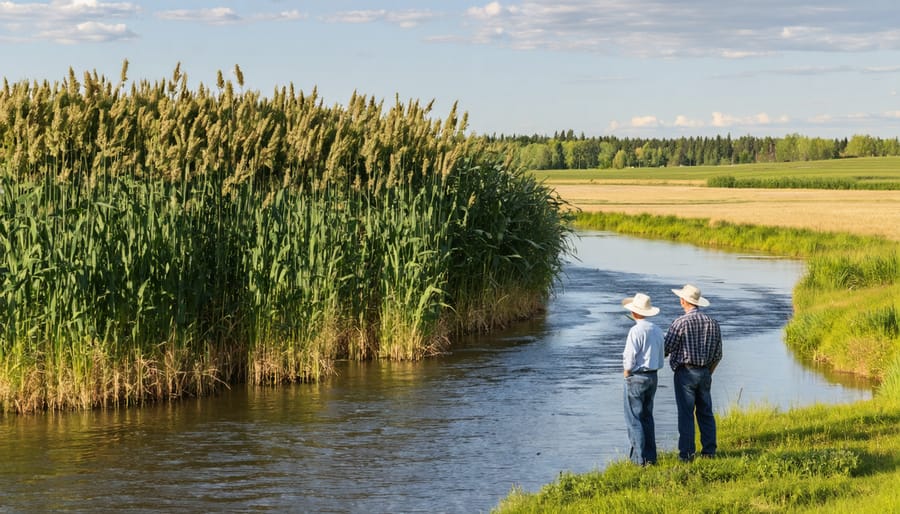Discover the critical role of three essential pollinators in Alberta’s thriving agricultural landscape: honeybees, bumblebees, and leafcutter bees. These tiny heroes ensure the successful pollination of crops like canola, alfalfa, and fruits, directly impacting yields and food security. Explore each pollinator’s unique contributions, the challenges they face, and practical strategies for farmers to create pollinator-friendly environments that support both agricultural productivity and ecological balance.
Mason Bees: The Gentle Giants of Pollination

Creating a Mason Bee Haven
To create a welcoming haven for mason bees, start by providing nesting sites made from untreated wood, bamboo, or cardboard tubes. Drill holes 5-10 mm in diameter and 15 cm deep into wood blocks, or bundle tubes together. Place the nesting sites facing south or east, ideally at eye level, and near pollen-rich plants like fruit trees, berries, and native wildflowers.
Ensure a mud source is available within 50 meters of the nesting sites, as female mason bees use mud to seal their egg chambers. If needed, create a mud puddle by filling a shallow container with soil and keeping it moist. Avoid using pesticides near the nesting sites and foraging areas to maintain a safe environment for these beneficial pollinators. With these simple steps, you can support thriving mason bee populations on your farm or garden.
Alfalfa Leafcutter Bees: The Unsung Heroes of Hay Fields

Managing Alfalfa Leafcutter Bees
To maintain healthy alfalfa leafcutter bee populations, provide them with a clean, dry nesting area filled with predrilled nesting boards or paper straws. Place the nesting sites near alfalfa fields for easy access. Protect the bees from predators and parasites by using fine mesh screens and removing infected cells. Regularly monitor the bees’ health and population size to ensure optimal pollination. After the pollination season, carefully remove the cocoons from the nesting materials and store them in a cool, dark place until the following spring. Integrate leafcutter bee management into your sustainable farming practices by minimizing pesticide use, providing diverse forage sources, and maintaining natural habitat around the fields. By creating a supportive environment for these hardworking pollinators, you can boost alfalfa yields and promote biodiversity on your farm.
Hoverflies: The Underappreciated Workhorses
Planting for Hoverflies
To attract and support hoverflies throughout the growing season, plant a diverse array of native flowers that provide nectar and pollen. Hoverflies are particularly drawn to flat or shallow blossoms in yellow, white, and blue hues. Consider including flowers from the Asteraceae family, such as asters, daisies, and coneflowers, as well as plants like alyssum, buckwheat, and phacelia. Aim for a continuous bloom period by selecting flowers with staggered flowering times. Planting in clumps or drifts can help hoverflies easily locate the flowers. Incorporate these pollinator-friendly plants in field margins, hedgerows, or dedicated insectary strips near your crops. By providing a consistent food source and habitat, you’ll encourage hoverflies to stay in the area and contribute to natural pest control and pollination throughout the season. Remember to minimize pesticide use near these plantings to create a safe haven for these beneficial insects.
Conclusion
In conclusion, honey bees, bumble bees, and leafcutter bees are vital pollinators in Alberta’s agricultural landscape. These hardworking insects contribute significantly to the production of crops such as canola, alfalfa, and various fruits and vegetables. As Alberta’s farmers, it is our responsibility to support and protect these essential pollinators by implementing pollinator-friendly practices on our farms. By providing diverse floral resources, reducing pesticide use, and creating suitable nesting habitats, we can help ensure the long-term survival of these pollinator populations. Consider exploring how climate-smart farming practices can also support a healthy pollinator environment. The health and prosperity of our agricultural industry depend on the well-being of these tiny but mighty creatures. Let us work together as a farming community to promote sustainable practices that benefit both our crops and the pollinators that make our success possible. Together, we can create a thriving and resilient agricultural future for Alberta.











